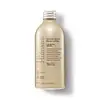What's inside
What's inside
 Key Ingredients
Key Ingredients

 Benefits
Benefits

 Concerns
Concerns

 Ingredients Side-by-side
Ingredients Side-by-side

Water
Skin ConditioningIsopropyl Myristate
EmollientGlyceryl Stearate Se
EmulsifyingParfum
MaskingPhenoxyethanol
PreservativeCetyl Alcohol
EmollientStearic Acid
CleansingCarbomer
Emulsion StabilisingTocopheryl Acetate
AntioxidantPanthenol
Skin ConditioningEthylhexylglycerin
Skin ConditioningSodium Hydroxide
BufferingHelianthus Annuus Seed Oil
EmollientButyrospermum Parkii Butter
Skin ConditioningAloe Barbadensis Leaf Juice
Skin ConditioningTocopherol
AntioxidantCitric Acid
BufferingSodium Benzoate
MaskingPotassium Sorbate
PreservativeLavandula Hybrida Oil
EmollientPelargonium Graveolens Oil
MaskingOcimum Basilicum Oil
MaskingRosmarinus Officinalis Leaf Oil
MaskingWater, Isopropyl Myristate, Glyceryl Stearate Se, Parfum, Phenoxyethanol, Cetyl Alcohol, Stearic Acid, Carbomer, Tocopheryl Acetate, Panthenol, Ethylhexylglycerin, Sodium Hydroxide, Helianthus Annuus Seed Oil, Butyrospermum Parkii Butter, Aloe Barbadensis Leaf Juice, Tocopherol, Citric Acid, Sodium Benzoate, Potassium Sorbate, Lavandula Hybrida Oil, Pelargonium Graveolens Oil, Ocimum Basilicum Oil, Rosmarinus Officinalis Leaf Oil
Cocos Nucifera Oil
MaskingSolanum Tuberosum Starch
AbsorbentCoco-Caprylate/Caprate
EmollientHelianthus Annuus Seed Wax
Skin ConditioningCarthamus Tinctorius Seed Oil
MaskingPolyhydroxystearic Acid
EmulsifyingTriethyl Citrate
MaskingZinc Ricinoleate
Magnesium Hydroxide
AbsorbentLauryl Laurate
Skin ConditioningSambucus Nigra Fruit Extract
AstringentGlyceryl Laurate
EmollientSalvia Officinalis Oil
MaskingHelianthus Annuus Seed Oil
EmollientTocopherol
AntioxidantGlyceryl Caprylate
EmollientGlyceryl Undecylenate
EmollientEthylhexylglycerin
Skin ConditioningSodium Caproyl/Lauroyl Lactylate
AntimicrobialCocos Nucifera Oil, Solanum Tuberosum Starch, Coco-Caprylate/Caprate, Helianthus Annuus Seed Wax, Carthamus Tinctorius Seed Oil, Polyhydroxystearic Acid, Triethyl Citrate, Zinc Ricinoleate, Magnesium Hydroxide, Lauryl Laurate, Sambucus Nigra Fruit Extract, Glyceryl Laurate, Salvia Officinalis Oil, Helianthus Annuus Seed Oil, Tocopherol, Glyceryl Caprylate, Glyceryl Undecylenate, Ethylhexylglycerin, Sodium Caproyl/Lauroyl Lactylate
Ingredients Explained
These ingredients are found in both products.
Ingredients higher up in an ingredient list are typically present in a larger amount.
Ethylhexylglycerin (we can't pronounce this either) is commonly used as a preservative and skin softener. It is derived from glyceryl.
You might see Ethylhexylglycerin often paired with other preservatives such as phenoxyethanol. Ethylhexylglycerin has been found to increase the effectiveness of these other preservatives.
Helianthus Annuus Seed Oil is the oil derived from the seeds of a Sunflower. Sunflower seed oil is non-fragrant. It is an emollient, meaning it helps to soften the skin.
Sunflower seed oil contains many fatty acids. The fatty acids found in sunflower seeds include (from highest amount to least): linoleic acid, myristic acid, palmitic acid, stearic acid, arachidic acid, oleic acid, and linolenic acid.
These fatty acids help the skin create ceramides. Ceramides play a role in repairing the skin barrier.
Helianthus Annuus Seed Oil helps moisturize the skin. This in turn helps the skin look more rejuvenated and smoother.
Sunflowers are rich in vitamin E.
Historians believe Indigenous cultures of North America domesticated sunflowers before corn. Thus they relied on sunflower oil for a variety of uses. One such use is moisturizing skin and hair.
Sunflower seed oil may not be fungal acne safe. We recommend speaking with a professional if you have any concerns.
Learn more about Helianthus Annuus Seed OilTocopherol (also known as Vitamin E) is a common antioxidant used to help protect the skin from free-radicals and strengthen the skin barrier. It's also fat soluble - this means our skin is great at absorbing it.
Vitamin E also helps keep your natural skin lipids healthy. Your lipid skin barrier naturally consists of lipids, ceramides, and fatty acids. Vitamin E offers extra protection for your skin’s lipid barrier, keeping your skin healthy and nourished.
Another benefit is a bit of UV protection. Vitamin E helps reduce the damage caused by UVB rays. (It should not replace your sunscreen). Combining it with Vitamin C can decrease sunburned cells and hyperpigmentation after UV exposure.
You might have noticed Vitamin E + C often paired together. This is because it is great at stabilizing Vitamin C. Using the two together helps increase the effectiveness of both ingredients.
There are often claims that Vitamin E can reduce/prevent scarring, but these claims haven't been confirmed by scientific research.
Learn more about Tocopherol